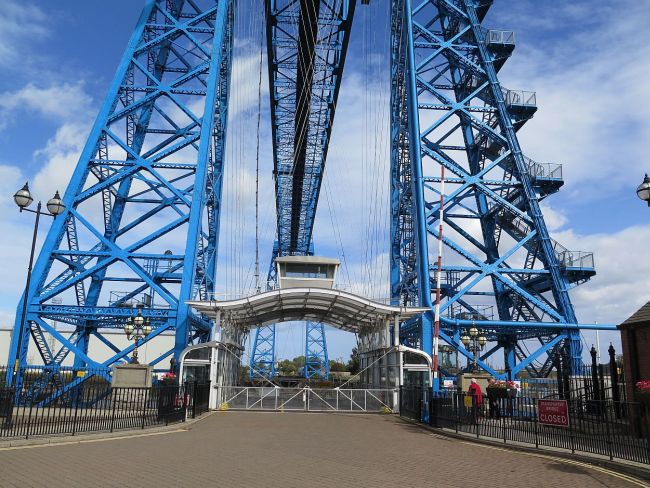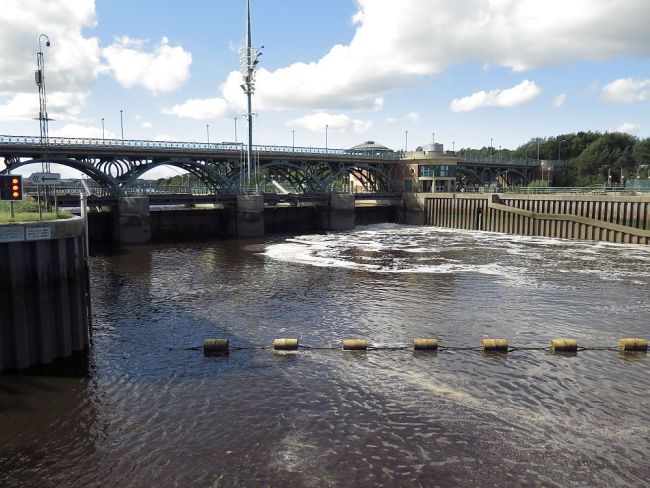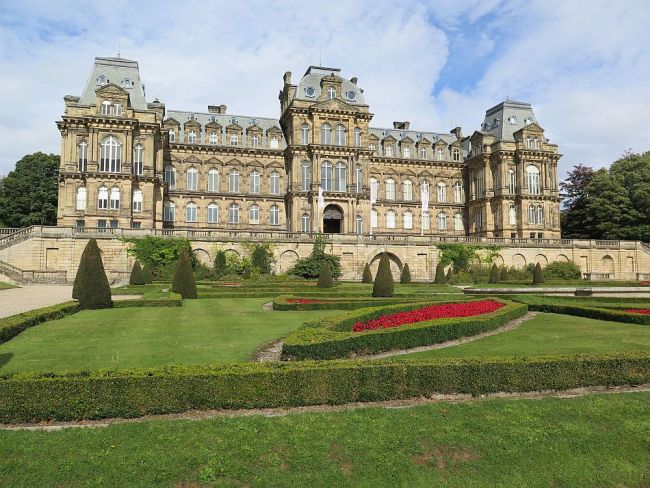Tees Valley
During the second week of September we headed up to the North East of England to Stockton on Tess as the start of a mini tour. Our first port of call was the CMC site White Water Park near the Tees Barrage. I think this site is one of the best CMC site we have stayed on in terms of site design. Just across from the site entrance is White Water Park which as the name might suggest is a canoe whitewater slalom course. Beyond the course is the Rive Tees and the Tees Barrage.
Unlike the day of arrival the next day was rather dull so we set off to explore Stockton on Tees. We knew there were buses but weren’t quite sure where they were so we set off to find them. There is a path down the side of the site that takes you to a handy ASDA supermarket and the buses are the other side of their car park. The bus didn’t take long to get into the centre of the town. Stockton has a rather wide main street with the old Town Hall bang in the middle. Perhaps more interesting is the Blue Plaque on the wall which informs the reader that it was in this building in 1810 that plans were being made for the Stockton and Darlington Railway, as they say the rest is history. They have made a nice job of the waterfront along the Tees with a suspension bridge linking the town centre with the new University Campus.

The following day the weather was a bit better even if there was a stiff breeze. The campsite is quite high up and you can see a long way including the Middlesbrough Transporter Bridge way in the distance. This was our destination for today. From the Bus Station in the town we caught the TR1 shuttle service which conveniently drops you off at the Bridge. It is an imposing structure originally built in 1911 to replace the overcrowded ferries that plied across the river full of workers. It is the longest working transporter bridge in the world at 49 metres high and with a span of 174 metres.

The better weather continued so the next day we decided to get the bikes of the back of the motorhome and explore along the river. We went across the Tees Barrage and cycled into Stockton on Tees along the river crossing from the south to north banks on the new Infinity Bridge. After lunch we cycled downstream as far as the Newport Bridge which is unusual in that the road platform can be raised to allow boats further upstream. For those interested in industrial heritage there is a lot to see in this part of the world. However that world has moved on and in the post industrial age some of these wonderful structures would not now be built.

After our four days at Stockton on Tees we moved up the Tees Valley to Barnard Castle to the CMC site there. As one might expect we now have a much more rural outlook. Depending on your level of fitness the stroll into town can be a challenge as the is a steep climb up past the ruined Castle that dominates the town. It is a pretty little town with lots of shopping and eating opportunities. One must if you stay here is a visit to the Bowes Museum. When you enter the grounds you are confronted with what looks like a French Chateau with formal gardens laid out in front. John Bowes and his French wife Josephine had lived in France and employed a French architect to design their museum. During our visit there was an exhibition of fashion through the eyes of fashion photographer from around the 1930’s almost up to the modern day. It was not just photos but the original dresses designed by every famous fashion house you could name! Other exhibits included a display of the original drawings for the BFG. There are lots of other galleries plus, of course, the famous Silver Swan which is mechanical and almost life size. It performs daily at 2.00pm, however the introduction is about eight minutes and the performance about 2 seconds so blink and you miss it! They are obviously concerned not to wear it out!
Off to Geordie Land in part two.
Comments
-
Thanks David, it's good to see some travel stories back on here and something with an industrial history is interesting to read about too.
I've visited the area several times and the Tees valley becomes an attractive area the further west you go. The Bowes Museum is certainly worth a visit, it has a special character of its own.
 0
0